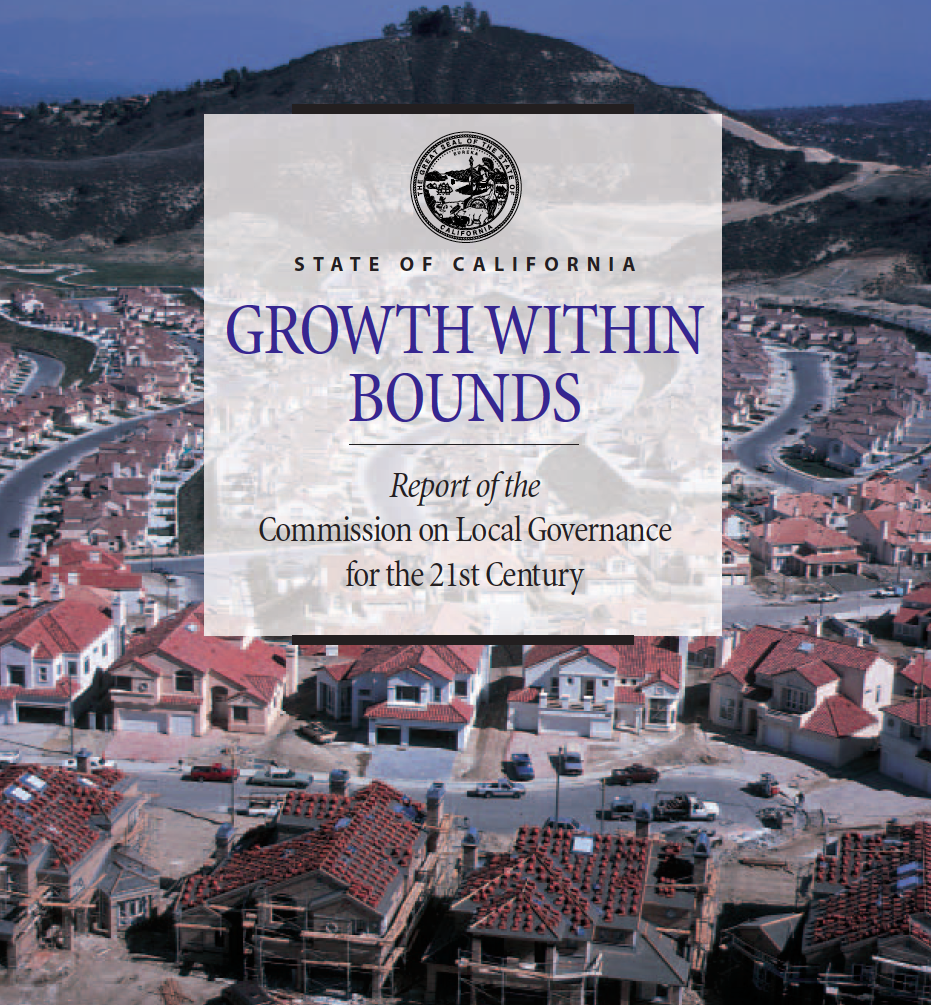Unnecessary Environmental Analysis
Across California, the process for formation of a new city involves an inappropriate analysis of the environment effects. Local Agency Formation Commissions (LAFCOs) are instructed by their organic act (Cortese-Knox-Hertzberg Act) to apply the CA Environment Quality Act (CEQA).
Such an analysis is unnecessary because municipal incorporation is merely a reorganization of the local governmental structure. It's a useless exercise because under state law a County's existing General Plan and implementing ordinances (that guide day-to-day land use and development) remain in effect when a new city is formed until the new city creates its own General Plan and implementing ordinances (roughly a 3-year process), the creation of which requires application of the state's process for analysis of projects that impact the environment. That's well and good until you realize that the environment is not affected by a change in the form of governance until a new General Plan is adopted.
Preparing a CEQA analysis and reaching a conclusion is an expensive and time-consuming process. (Sacramento County actually has a fairly decent description of the moving parts involved.) A full Environmental Impact Report (EIR) takes 1 year or more to complete. But even a cursory analysis ( a "negative declaration") can add at least half a year to the timeline for incorporation. CEQA is a disclosure law that stipulates involvement of the public. Further, LAFCOs typically do not have skilled environmental analysis professionals on their staffs. They have to contract out for the service. When you consider all the time it takes for public agencies to solicit bids and award contracts, for studies to be preformed and conclusions to be reached, and for public notification and involvement, it is clear that a lot of time can be spent on a CEQA analysis. Those activites come with a hefty price tag - in the vicinity of $140,000 or more.
The Commission recommends that a statutory CEQA exemption be provided for a new incorporation. This recognizes that an act of incorporation constitutes only a political reorganization. Nevertheless, when the newly incorporated city adopts a general plan and zoning ordinances, these"Growth Within Bounds, Planning California Governance for the 21st Century" (Commission on Local Governance for the 21st Century, Jan. 2000, page 66)
acts would not be exempt from CEQA.
Unfortunately for the citizen groups that typically promote cityhood for their community, CEQA analysis has become a tool whereby a LAFCO can add expense and time to the incorporation process. Here in Sacramento County, our LAFCO has interpreted the requirement as "must do a full-blown EIR" as a result of its experience during the Citrus Heights incorporation process almost 30 years ago. Arden Arcade isn't some blank canvass of lush green meadows and pristine woodlands that could be ruined by bulldozers - that ship sailed long ago. So when incorporation of Arden Arcade was analyzed in depth for its potential environmental impacts eleven years ago, the CEQA analysis disclosed that (gasp!) Arden Arcade is a fully developed, intensely urbanized area. When you consider that the adoption of a new General Plan requires the implementation of CEQA, it is crystal clear that it is duplicative and unnecessary to invoke CEQA as part of the LAFCO incorporation process.

Lo and behold, that's what a state agency reported to the Legislature 21 years ago. In its report, "Growth Within Bounds", the State Commission on Local Governance for the 21st Century specifically recommended dropping the CEQA requirement from the LAFCO municipal incorporation process. Yet the CEQA stipulation remains, even though legislators have been implored to activiate that recommendation. Until this is changed, it is just another example of how difficult it is for unincorporated communities to obtain the privileges of democracy and local control enjoyed by California's existing 482 cities.
